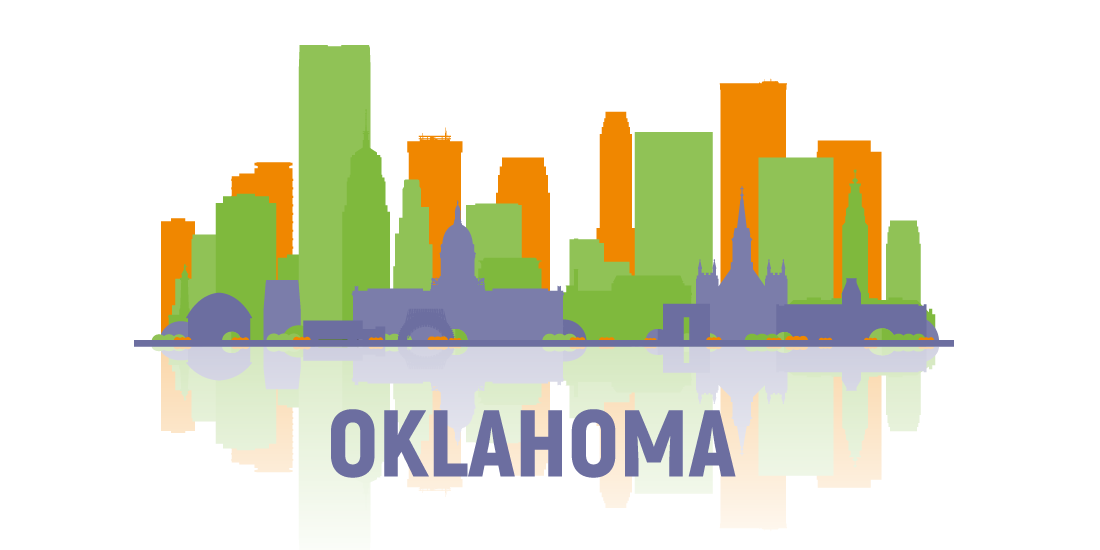
Exploring Linguistics: The Shawnee Language Translator
06 Jul Exploring Linguistics: The Shawnee Language Translator
In the realm of linguistics, the Shawnee language holds a unique place as a Native American language with a rich history and cultural significance. The Shawnee language translator is a tool that aims to bridge the gap between the past and the present by facilitating communication and preserving this important language for future generations.
Understanding the Shawnee Language
The Shawnee language, belonging to the expansive Algonquian linguistic family, serves as a vibrant thread in the fabric of North American indigenous cultures. Its phonology, syntax, and lexicon offer insights into the worldview and social practices of the Shawnee people, who have historically navigated challenges from forced relocation to the imposition of foreign languages and cultures. Despite these pressures, the Shawnee language has preserved unique linguistic features, including complex verb structures and a rich system of animate and inanimate noun classifications, reflecting the community’s deep connection to the natural world. The language’s emphasis on verb tenses and moods, for instance, conveys nuances in meaning and intention that are intrinsic to Shawnee oral traditions and storytelling. As a vehicle for conveying cultural knowledge, the Shawnee language encapsulates not only everyday communication but also spiritual beliefs, environmental wisdom, and ancestral teachings. Learning and engaging with the Shawnee language, therefore, is not merely an academic pursuit but an immersion into the living heritage and enduring resilience of the Shawnee people. This linguistic journey illuminates the importance of understanding and appreciating the complexities of Shawnee grammar, vocabulary, and its capacity for expressive richness, all of which contribute to the language’s significance in the tapestry of human communication.

The Urgent Need for Shawnee Language Revitalization
The Shawnee language, a treasure trove of cultural wisdom and heritage, stands on the precipice of fading into obscurity. The forces that threaten its existence are many, from historical policies of linguistic suppression to the modern challenges of globalization and technological dominance, which often marginalize indigenous languages. As younger generations grow increasingly distant from their ancestral linguistic roots, the continuity of Shawnee’s oral and cultural traditions faces formidable challenges. This alarming trend underscores an urgent necessity for concerted revitalization efforts.
Revitalization initiatives are critical not only for the preservation of the Shawnee language itself but also for the maintenance of cultural identity and the empowerment of Shawnee communities. The loss of a language signifies the loss of a unique worldview, including indigenous knowledge systems, environmental lore, and spiritual practices that have been passed down through generations. Thus, the campaign to breathe new life into the Shawnee language is as much about reclaiming and safeguarding a rich cultural legacy as it is about linguistics.
Recognizing this, a growing movement among Shawnee speakers, educators, and allies aims to reverse the tide of linguistic erosion. Innovative strategies, from immersive educational programs to the development of digital resources like the Shawnee language translator, are being deployed to inspire both young and old to reconnect with their linguistic heritage. These efforts not only facilitate the practical use of Shawnee in daily life but also reignite the communal bonds forged through shared language. In this critical juncture, every action taken towards revitalization serves as a step toward ensuring that the Shawnee language flourishes, embodying the resilience and vitality of the Shawnee people.
Tools and Technologies for Shawnee Language Translation
The advent of the Shawnee language translator marks a significant leap forward in linguistic technology, providing a crucial bridge for enhancing communication within and beyond the Shawnee community. This innovative tool leverages state-of-the-art machine learning techniques to offer real-time translation services, breaking down barriers that have long hindered the seamless exchange of knowledge and cultural insights.
Central to its effectiveness, the translator integrates comprehensive linguistic databases that have been meticulously compiled from a variety of sources, including historical texts, contemporary usage, and input from native speakers. By incorporating such diverse data, the tool ensures a more accurate and culturally relevant translation, reflecting the nuanced nature of the Shawnee language.
Moreover, the application of advanced algorithms enables the system to learn and adapt over time, improving its accuracy with each use. This adaptive capability is critical given the Shawnee language’s complex grammar, syntax, and unique idiomatic expressions, which require sophisticated computational models to translate effectively.
As part of the broader effort to revitalize the Shawnee language, the translator also serves as an educational resource, supporting learners at different proficiency levels. Through interactive features and user-friendly interfaces, it encourages consistent practice and immersion, key components of language acquisition.
Importantly, the development of such technologies is a collaborative effort, necessitating ongoing dialogue with Shawnee speakers to ensure the tool remains authentic and true to the spirit of the language. It symbolizes a harmonious blend of tradition and innovation, contributing significantly to the preservation and promotion of the Shawnee language in the digital age.
Challenges in Developing a Shawnee Language Translator
Creating a Shawnee language translator is fraught with unique obstacles that underscore the complexity and fragility of preserving indigenous languages. One of the most daunting challenges is the limited availability of comprehensive linguistic documentation. Unlike widely spoken languages that boast vast repositories of written and recorded materials, Shawnee’s resources are comparatively scarce. This scarcity makes it difficult to develop a translator with the depth and breadth needed to cover all aspects of the language accurately.
Additionally, the intricate nature of Shawnee grammar and syntax poses significant hurdles for computational models. The language’s rich verb conjugations, intricate noun classifications, and the use of contextual modifiers demand sophisticated algorithms capable of understanding and interpreting these nuances. Achieving this level of linguistic sensitivity requires advanced technology and innovative programming techniques, which are often challenging to develop and refine.
Engagement with the Shawnee community is vital for the authenticity and success of the translator. However, fostering this collaboration can be challenging. Ensuring the translator reflects the cultural nuances and preferences of the Shawnee people necessitates ongoing dialogue and feedback from native speakers, language experts, and cultural leaders. This collaborative process is essential but can be time-consuming and requires mutual trust and respect.
Moreover, securing the necessary funding and resources for such an endeavor remains a significant barrier. Indigenous language projects often compete for limited resources, and gaining financial support for developing language technologies can be particularly challenging. These challenges highlight the multifaceted effort required to bring the Shawnee language translator from concept to reality, underpinning the importance of sustained commitment and innovative approaches to overcome these hurdles.
Success Stories in Shawnee Language Learning and Translation
In the journey towards the revitalization of the Shawnee language, there have been remarkable achievements that highlight the resilience and dedication of its community. Innovative language learning initiatives and translation projects have emerged, showcasing the potential for successful linguistic preservation. One notable example is the development of language apps and interactive software, specifically designed to teach Shawnee to both children and adults. These digital tools not only facilitate learning through engaging mediums but also ensure the accessibility of the language to Shawnee people worldwide.
Furthermore, community-led immersion programs have seen a resurgence, creating environments where learners can immerse themselves in Shawnee language and culture. These programs often combine traditional teaching methods with cultural activities, allowing participants to experience the language in its living context. The success of these immersion programs has been pivotal in nurturing new generations of Shawnee speakers, contributing significantly to the language’s ongoing revitalization.
In addition, academic collaborations have produced a range of educational materials, from textbooks to online courses, which have been instrumental in supporting learners at various levels of proficiency. These resources often incorporate insights from Shawnee elders and language experts, ensuring that the knowledge passed on is both authentic and comprehensive. The collaborative nature of these projects highlights the importance of community involvement in language preservation efforts, proving that with collective action, the Shawnee language can continue to flourish.

How You Can Support Shawnee Language Preservation
Supporting Shawnee language preservation is a vital act that goes beyond mere linguistic interest; it’s a commitment to cultural sustainability and respect for indigenous heritage. Individuals passionate about this cause can make a meaningful impact in various ways. Engaging with Shawnee language resources, such as subscribing to language learning apps or attending workshops, not only enriches your understanding but also provides financial support to those programs. Additionally, spreading the word about the significance of Shawnee language preservation through social media or community discussions can help to elevate the conversation and attract more allies to the cause.
If you possess skills in technology, consider volunteering your expertise to assist in the development or refinement of digital tools like the Shawnee language translator. Such contributions are invaluable in enhancing the accessibility and quality of language resources. Alternatively, supporting local and online Shawnee artists and businesses can also indirectly contribute to the preservation efforts by strengthening the economic foundation of the Shawnee community.
Philanthropic support is another crucial avenue. Donating to organizations and educational institutions that are at the forefront of Shawnee language preservation can help fund the creation of new learning materials, scholarships for language learners, and the organization of cultural events that celebrate and promote Shawnee heritage.
Everyone has a role to play in the preservation of the Shawnee language. By actively participating in these efforts, you contribute to a legacy of cultural diversity and resilience, ensuring that future generations can enjoy and benefit from the richness of the Shawnee language and culture.
FAQ’s
What is "The Shawnee Language Translator"?
“The Shawnee Language Translator” is a specialized tool designed to facilitate accurate translations between Shawnee, an indigenous language, and English.
How does "The Shawnee Language Translator" ensure accurate translations?
The tool employs linguistic experts and native speakers to ensure precise interpretations that capture the nuances of both languages.
Which languages does "The Shawnee Language Translator" support?
“The Shawnee Language Translator” focuses primarily on translating between Shawnee and English, catering to preservation efforts and cultural exchange.
Is "The Shawnee Language Translator" available online or as a mobile app?
Yes, “The Shawnee Language Translator” is accessible online, making it convenient for users to translate texts and documents.
Can "The Shawnee Language Translator" help in learning the Shawnee language?
Dental practices should choose translation providers with experience in healthcare, particularly in dental terminology. It’s important to look for certifications or credentials that demonstrate the provider’s proficiency in delivering accurate and culturally sensitive translations. This ensures compliance with healthcare standards and enhances patient care outcomes.

